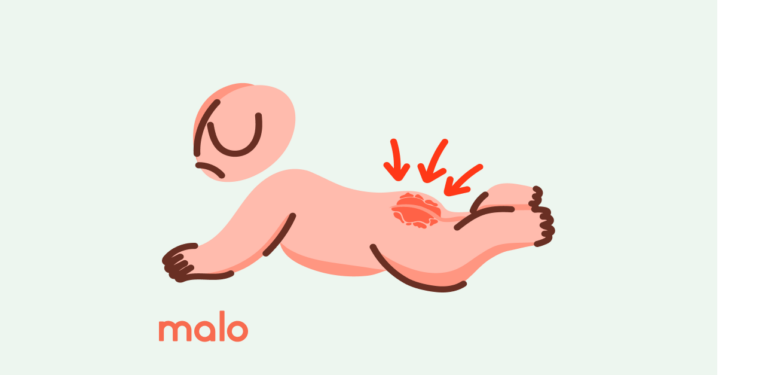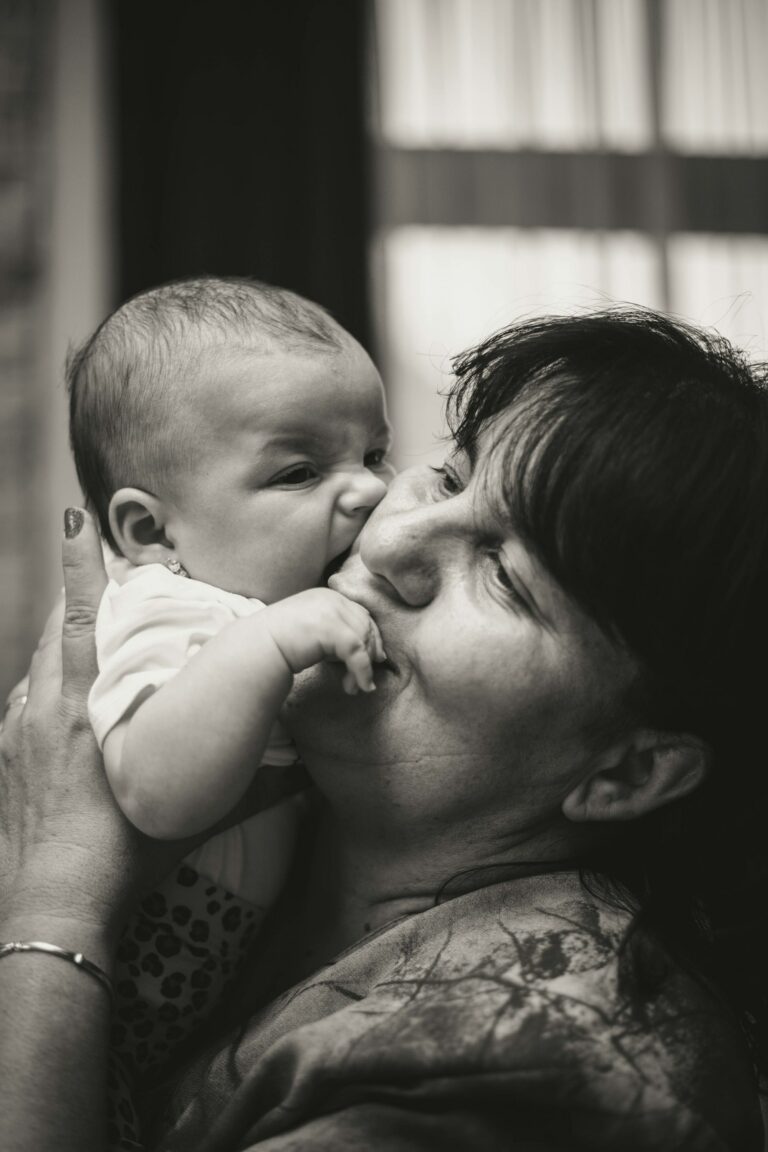Every parent watches their baby’s movements and comfort with a keen, almost instinctive attention—so when something feels off, when your little one seems to favour a side, struggles during feeding, or cries inconsolably, doubt and worry can set in quickly. What if, despite all care, a slight twist in the neck or a subtle flattening of the head persists, defying your best efforts at positioning and soothing? The conversation around KISS syndrome has emerged from precisely these everyday puzzles: unexplained irritability, motor delay, a persistent head tilt—signs that urge closer observation, but all too often spark confusion. Questions swirl: is KISS syndrome real, just a name for common baby quirks, or something that could shape your child’s future development if missed? Scientific debate remains lively, but as a parent, the focus rests on understanding what to watch for, where to seek help, and how to encourage your baby’s healthiest possible start. Here, we unravel the medical, developmental, and practical aspects—so you can feel equipped, not overwhelmed.
Understanding KISS Syndrome: What it Means for Babies
KISS syndrome—standing for Kinematic Imbalance due to Suboccipital Strain—is a term used to describe a biomechanical dysfunction at the juncture where the base of the skull meets the cervical spine (what doctors call the craniocervical junction). The core idea is simple yet striking: a minor misalignment or restriction here can ripple outward, touching posture, comfort, feeding, even the earliest movements. Picture an infant who prefers to look only one way or constantly arches back; these subtle signs may be the tip of a deeper imbalance.
Yet, there’s debate. Some practitioners—especially those in manual therapy or osteopathy—see KISS syndrome as a genuine pattern affecting infant development. Mainstream pediatrics, however, often questions its existence, pointing out the lack of universal diagnostic criteria and the overlap with normal infant behaviour or other conditions.
Types and Manifestations: When to Pay Attention
Two Main Presentations
- Type I: Your baby habitually tilts the head to one side, possibly developing a “C-shaped” body posture—sometimes quite noticeable during sleep or play.
- Type II: There’s persistent backward extension of the cervical spine, which can make feeding (especially breastfeeding) distinctly difficult. Babies with this type may seem uncomfortable, arching their bodies or resisting cuddling.
Why do these patterns matter?
You might notice:
- Delays rolling, sitting, or holding up the head
- A tendency to use one hand or leg more
- Challenges during sleeping—waking often, fussing when placed on the back
- Signs like mild plagiocephaly (flattened head shape), or even changes in the alignment of the hips and pelvis
Even when changes seem subtle, they can hint at a bigger developmental puzzle—one that benefits from observing, documenting, and, if needed, seeking expert evaluation. Early identification naturally opens doors for more tailored support.
Causes and Risk Factors: Exploring the Origins
Birth-Related Triggers
The start of KISS syndrome often lies in the dramatic passage through birth. Think about:
- Difficulties during delivery—forceps, vacuum, or cesarean section
- Quick or prolonged labour
- Multiple births, or cramped conditions in the uterus
- Situations like high birth weight, abdominal pressure, or umbilical cord complications
All of these can result in minor injuries or strains at the sensitive junction of the neck and skull. Add to this prenatal factors—such as heightened maternal stress—and the body’s newborn musculoskeletal balance can be affected even before that first big cry.
Mechanical and Anatomical Elements
Some children may have a predisposition due to innate anatomical nuances—mild joint restriction, a family tendency (though not conclusively proven), or simply how their bodies respond to physical stress at birth. This interplay is complex and, for many parents, impossible to influence. The real value lies in noticing changes and discussing them with a specialist.
Recognising Symptoms: From Subtle Signs to Persistent Patterns
Hallmark Features
- Persistent head tilt or resistance to turning—often called a “preferred head position”
- Torticollis (involuntary neck twisting)
- Asymmetry in face or skull—such as flatness on one side (plagiocephaly)
- Trouble holding up the head, using one side more
- Prolonged or intense crying, irritability, difficulty with feeding or frequent spitting up
- Sleep that feels disrupted, with broken cycles or discomfort in certain positions
- Delays in movement milestones like rolling or crawling
How Symptoms Grow With Age
If symptoms persist, some older children develop:
- Chronic neck or back pain
- Headaches, problems concentrating
- Balance issues, sometimes described as “clumsiness”
- Early behavioural challenges—at times reminiscent of attention issues (ADHD)
- Recurrent ear infections or emerging scoliosis
Diagnostic Approach: What Happens During Evaluation?
A careful health professional will:
- Ask about pregnancy, birth, and early milestones
- Observe posture, movement, and asymmetry
- Gently examine the neck and skull, watching how your child reacts
Imaging (like X-rays) is rarely needed, except to rule out structural problems. The main goal: distinguish KISS syndrome from conditions like congenital muscular torticollis (where a specific neck muscle is tight rather than a joint dysfunction), as well as ruling out more serious neurological or structural issues.
Management: What Can Actually Be Done?
Gentle, Day-to-Day Measures
- Encourage tummy time (with supervision) to build neck muscles
- Vary head position during restful periods, promote turning towards both sides
- Incorporate movement and play that stimulates the less-preferred side
- Alternate directions when holding, rocking, or carrying your baby
Manual Therapy and Controversy
Some parents turn to osteopathy or chiropractic interventions. These manual therapies, when performed by trained paediatric professionals, are described (in anecdotal reports and smaller studies) as gentle and focused on restoring joint movement. While many families observe improvements, scientific reviews highlight limited, inconsistent evidence and stress that manipulation should always follow thorough medical review. Mild, short-lived side effects are most common (such as fussiness or transient crying), but rare cases caution against unsupervised or aggressive approaches.
Medical Supervision Remains Central
- Any therapy should begin only after a medical check-up to eliminate other causes
- Manual techniques must be performed by accredited, paediatric-trained specialists
- Combining physiotherapy or occupational therapy can support motor skills, especially if feeding or motor development are affected
Prognosis: Risks and Future Outcomes
If KISS syndrome Persists
Sometimes, untreated or unresolved KISS syndrome can progress, contributing to what some experts call KIDD syndrome—where cognitive, behavioural, or coordination difficulties may arise later. Timely therapies, and especially a cooperative approach among paediatricians, therapists, and families, can change the outlook dramatically.
Long-Term Impacts
Unaddressed, your child may face:
- Ongoing discomfort (chronic neck or back pain)
- Delayed motor or language skills
- Social difficulties, including challenges at school
Importance of Regular Review
Symptoms may recur after new falls or strains. Annual check-ins, or visits if new signs emerge, support your child’s long-term health and confidence.
Perspectives and Current Debate
Recognition Issues
Many paediatric societies hesitate to officially accept KISS syndrome, citing lack of research standards, broad overlap with everyday infant behaviours, and worries about missing other diagnoses.
Safety and Ethics
The key concern: moving too quickly towards manual therapy could overshadow serious underlying issues. Informed, stepwise care—guided by professionals experienced both in paediatrics and manual techniques—offers the safest route.
Supporting Your Child, Every Step of the Way
Parents as Observers and Partners
Noticing postures, movement, and comfort daily—especially after changes or new interventions—gives valuable feedback for adjusting care. Keeping notes, photos, or videos can help your healthcare team understand subtle progress or persistent patterns.
Practical supports include:
- Consistent, gentle tummy time
- Alternating sleep head positions, always on the back
- Balance between both sides during playing, carrying, and feeding
Finding and Using Support Networks
Connecting with others who have faced KISS syndrome—in local groups or trusted online communities—often provides not just reassurance, but a space for new tips and empathy.
Fitting Therapy Into Everyday Life
When therapies are recommended, weave routines naturally into feeding, play, and sleep. Consistency counts, but flexibility is equally important; some days bring more resistance, others fresh progress. Communication with your child’s healthcare team remains a steady anchor throughout.
Differentiating KISS from Other Infant Postural Disorders
- KISS syndrome: Rooted in restriction at the spinal joint, can spread through posture and movement
- KIDD syndrome: Later outcomes, often affecting behaviour, coordination, or learning
- Congenital muscular torticollis: Muscle-based, centered on a specific neck muscle rather than the spinal alignment
Knowing the difference means more personal, effective care planning.
Signs That Warrant a Doctor’s Opinion
- Persistent head tilt or side preference
- Difficulty rotating the head fully, slow to hold it up
- Asymmetric body use
- Pronounced irritability or inconsolable crying
- Feeding troubles, frequent spitting up
- Delays in motor milestones (rolling, crawling, walking)
Key Takeaways
- KISS syndrome describes a debated but significant biomechanical pattern in infants, showing as head tilt, movement asymmetries, and possible feeding or developmental issues.
- Key symptoms often blur with those of more urgent conditions, so medical guidance before any manual or alternative therapy is necessary.
- Universal recognition is lacking—manual therapy might help, but always seek paediatric expertise and avoid uncertified or unsupervised treatments.
- Lasting effects are unlikely with early, tailored care. Observant, proactive parenting, plus regular follow-up, builds a strong foundation for your child.
- Many resources and trained professionals are available; for personalised guidance and free paediatric health questionnaires, download the Heloa app.
Questions Parents Ask
Can KISS syndrome disturb my baby’s sleep?
Yes, some experts and families have noticed that babies exhibiting symptoms of KISS syndrome often find it tricky to settle, may wake frequently, or seem restless in certain positions. If sleep patterns change or bedtime becomes a battle, bring these observations to your paediatrician; solutions can be very individual and often gentle adjustments can help.
Is KISS syndrome widely accepted by medical professionals?
In paediatrics and mainstream medicine, KISS syndrome is not officially recognised. The notion has roots in manual therapy circles, and while some specialists report strong improvement with their techniques, much of the broader medical world considers the scientific evidence still developing. If opinions differ, seek explanation from your child’s doctor, focusing on clarity and your child’s unique picture.
Do manual therapies actually help KISS syndrome?
Some parents have seen progress after gentle interventions by specialists like osteopaths or chiropractors, but research offers mixed and limited findings. Always consult your paediatrician first. Only experienced, well-trained providers should treat infants, balancing possible benefits against potential risks. Each baby is unique; your confidence in the approach is highly valued.
What are the early warning signs I should watch for?
Look for one-sided head position, trouble turning or lifting the head, flatness on one side of the skull, a tendency to use one arm or leg more, recurrent intense crying, or delays with rolling and crawling. These symptoms deserve attention, and prompt medical assessment sets the stage for healthier development.









